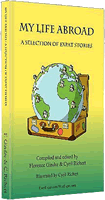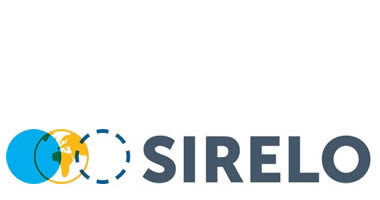Getting There by Air, Bus, Train

Air
Canada has 10 major international airports, 16 other airports that handle over 200,000 persons per year, and 300 other smaller airports. The Government of Canada maintains ownership of most major airports and leases them to local authorities. Canada’s largest airports are Toronto Pearson International Airport, with over 30 million passengers per year, and Vancouver International Airport, with over 16 million passengers per year.
Aircraft safety standards are maintained by the Canadian Transportation Agency.
Air - Domestic
Canada’s largest air carrier and flag carrier is Air Canada, which operates over 350 aircraft. Air Canada serves most Canadian cities, and its smaller Air Canada Jazz service links regional centers in Canada.
Canada’s second largest air carrier is WestJet, based in Calgary. It serves all major Canadian cities.
In recent years smaller airlines have begun competing with Air Canada and WestJet for domestic and international passengers, such as Porter Airlines, which offers services between Ontario, Quebec, Nova Scotia, New York, Illinois, Massachusetts, Vermont, Virginia, and South Carolina.
Air – International
All major international airlines offer direct or code-share services to Canada.
Air Security
The Canadian Air Transport Security Authority (CATSA) is responsible for air travel safety in Canada.
For a complete list of permitted and prohibited items on air travel in Canada, visit CATSA’s web site.
At all security checks in Canada all of your belongings will be x-rayed prior to security approval. You will be required to remove all sweaters, jackets, etc. and place your personal belongings in a plastic bin provided. Liquids of less than 100 ml must be placed in transparent plastic bags (provided at most airports free of charge). Laptops, cameras, cell phones, and other electronics must be removed from your luggage and placed in a separate plastic bin. Belts, metal jewelry, and coins must also be placed in a plastic bin. Pets must be removed from carriers, and carriers must be passed through x-ray machines. Children must be removed from strollers or carriers, and security officials must manually check strollers and carriers.
If you are uncomfortable with the contents of your luggage being x-rayed, such as certain medications, you may request a manual search.
After placing your belongings in the plastic bins provided, you must pass through a metal detector. Pet owners must carry their pet through the metal detector. Parents must accompany children.
Some passengers may be required to undergo a physical exam. Female officers are on hand to conduct physical exams for female passengers. You may also request that your physical exam be conducted in a private room or partitioned area.
At many airports full body scanners are now replacing physical exams.
To speed up security and customs processes, iris recognition technology is available at the Vancouver, Calgary, Edmonton, Winnipeg, Halifax, Toronto Pearson, and Montreal Trudeau airports, allowing pre-approved passengers to clear customs quickly. Travellers may also apply for a NEXUS card, which grants them fast-track access to security screenings at airports.
Customs
The Canadian Border Services Agency (CBSA) is responsible for managing and enforcing domestic trade and travel laws.
According to CBSA’s regulations, before arriving in Canada you should prepare two copies of a list of all the goods you intend to bring into Canada as your personal effects. Include the value, make, model and serial number (when applicable). This list should be divided into two sections. In the first, list the goods you are bringing with you; in the second, list the goods that will follow at a later date. Goods that arrive later will only qualify for duty and tax-free importation if they are on this original list.
Temporary residents (residents in Canada less than 36 months) or visitors to Canada may import 1.5 liters of wine, 1.14 liters of alcoholic beverages, or 8.5 liters of beer or ale, duty free. They may also import 200 cigarettes, 50 cigars, 200 grams of manufactured tobacco, and 200 tobacco sticks, duty free.
If you are importing more than $10,000 CAD (or its equivalent in a foreign currency) you must report the amount to a CBSA office at an airport.
Bus
Bus services are offered between Canada and the United States. You must present your passport and a valid visa (if applicable) when crossing the border between these two countries, and are subject to the same importation, documentation, and customs regulations as air travel passengers.
Train
Trains services are offered between Canada and the United States (excluding Alaska and Hawaii). You must present your passport and a valid visa (if applicable) when crossing the border between these two countries, and are subject to the same importation, documentation, and customs regulations as air travel passengers.
Documentation
When crossing a border into Canada you must present a valid passport and visa (if applicable) to a border services officer.
United States citizens are not required to present a passport, but should carry a proof of citizenship (e.g. birth certificate) and photo ID. Permanent residents of the US must also bring their Permanent Resident Card.
If you are travelling with children under the age of 18 you must present proper identification for each child (birth certificate, passport, citizenship card, permanent resident card, etc.) If you are not the child’s legal guardian or parent, you must also present written permission from the child’s legal guardian or parent authorizing the trip.
By Jess Gerrow, who traded city life in Canada for island life in the Mediterranean two years ago. She is a postgraduate marketing student, blogger, and freelance writer.
- My Life Abroad -
A selection of expat stories

"A fun compulsive read!"
J. Matcham, Amazon
"I strongly advise people ready to live abroad to read this book!"
Patrice, Amazon

 Hiring packing services reduces the stress of moving
Hiring packing services reduces the stress of moving
 AGS Worldwide Movers
AGS Worldwide Movers 1stMove Car Shipping
1stMove Car Shipping